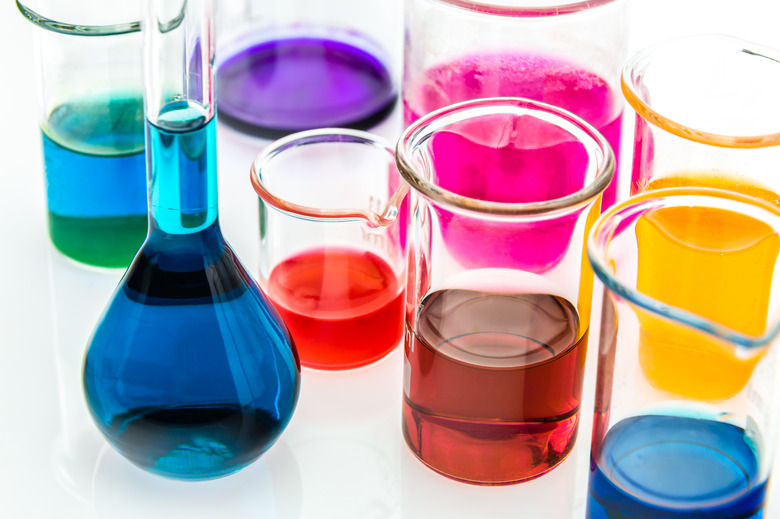How To Calculate Initial Concentrations
Calculating the initial concentration of a solution – otherwise known as molarity – is an important process commonly found in the chemical and biochemical world. Molarity is the number of moles of solute per liter of solution. Therefore, you need to determine how many moles of a solute are in the solution and the total volume of the solution.
**Step 1.** Weigh the amount of solute (the compound being dissolved) in grams. Then determine how many grams are in a mole of the solute. There are 40 g per mole in sodium hydroxide (NaOH). Therefore, 20 g of NaOH would equal 0.50 mol of NaOH. The equation looks like this:
mol NaOH = 20.0g NaOH x 1 mol NaOH/40.0 g NaOH.
**Step 2.** Measure the amount of the solvent that you have. If it is less than a liter, convert the number of milliters into liters. There are 1000mL in 1L. For example, if you have 500 mL:
500 mL x 1L/1000mL = 0.500 L solvent.
**Step 3.** Divide the moles of solute found in Step 1 by the liters of solvent found in Step 2 to find the initial concentration of a solution. The equation looks like this:
M = 0.50 mol NaOH/0.500 L solvent = 1 M NaOH.
In this example, the molarity (M) of the NaOH in the solvent is one mole. As more of the solvent is removed, the concentration of the NaOH would continue to rise. With acids and bases, the higher the concentration, the stronger it becomes.
TL;DR (Too Long; Didn't Read)
Keep track of your units so that you can make a clean conversion to moles and the liters of the solvent. Not keeping track of units can make it difficult when dealing with conversions from very small amounts to moles.
Cite This Article
MLA
Writer, Contributing. "How To Calculate Initial Concentrations" sciencing.com, https://www.sciencing.com/calculate-initial-concentrations-5990855/. 13 March 2018.
APA
Writer, Contributing. (2018, March 13). How To Calculate Initial Concentrations. sciencing.com. Retrieved from https://www.sciencing.com/calculate-initial-concentrations-5990855/
Chicago
Writer, Contributing. How To Calculate Initial Concentrations last modified March 24, 2022. https://www.sciencing.com/calculate-initial-concentrations-5990855/
